Existing User Log In
New User Registration
Register for a free account to gain full access to the VGChartz Network and join our thriving community.



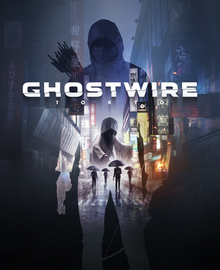

America - Front


America - Back

Tango Gameworks
Action-Adventure
| Owners: | 0 |
| Favorite: | 0 |
| Tracked: | 0 |
| Wishlist: | 0 |
| Now Playing: | 0 |
Ghostwire Tokyo has been on the top of my wishlist ever since its stellar trailer at E3 2019. The promise of traditional Japanese horror in a Sony-backed first rate console exclusive was incredibly exciting and I expected it to quench my thirst for horror following on from Resident Evil Village. However, the end result was not quite what I had imagined...
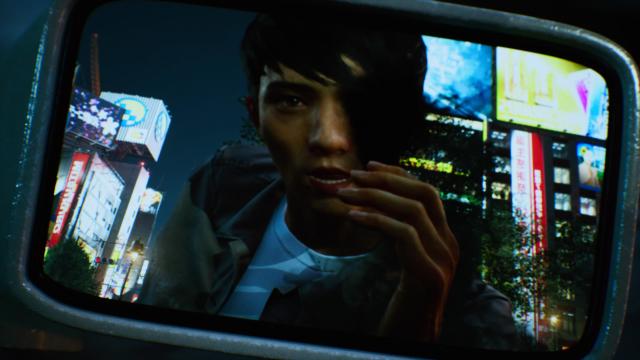
In Ghostwire Tokyo you play as Akito, a young Japanese man who wakes up in the middle of Shibuya after a sudden attack by ghosts. You're alone; Tokyo's entire population has vanished and ferocious ghosts - known as the Visitors - have taken over the city. Akito survived thanks to KK, another person's spirit that now possesses his body, granting him powers that defeat the Visitors. When Akito rushes to visit his sickened sister at the hospital, a threatening man in a Hannya mask makes her vanish as well. Hannya (which is also his name) has ill-omened plans for her spirit (and indeed everyone else's), which of course Akito refuses to countenance.
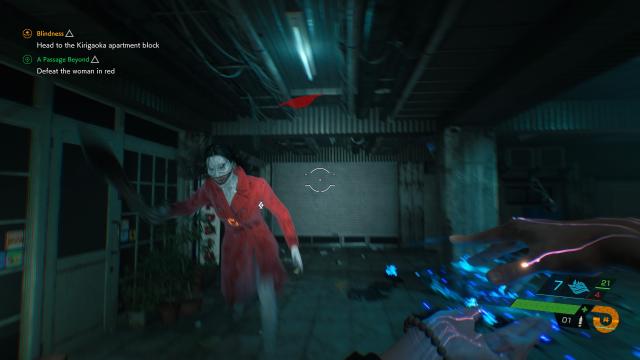
Ghostwire Tokyo is actually a novel type of first person shooter. Akito shoots magic with his hands from a first person perspective, which feels strange at first but is remarkably engaging and original. You start with a wind spell, which is designed to be shot rapidly from long range, but two other abilities quickly come to form a more varied arsenal. A water spell works at closer range but has greater power, while a fire one combines range and power but is slower and of limited use. You can also charge each of these for greater effect. In combat, this novel "shooter" turns out to be quite enjoyable; shifting between the three elements to counter waves of Visitors is a great feeling, and most enemies are tough and hit hard, which puts you in a constant struggle for survival. Upon defeating a Visitor, Akito can extract its core with magical strings (or his hands, if he's close enough), which recovers both health and magical power.
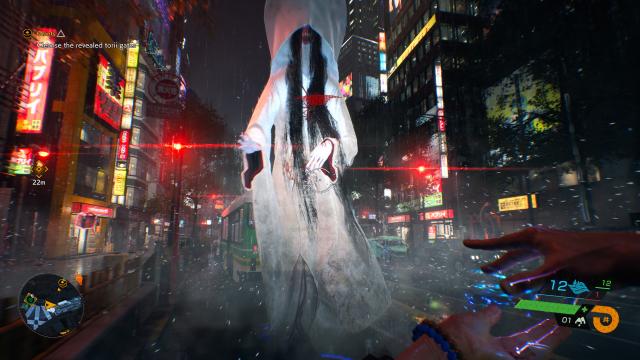
Fights in Ghostwire Tokyo are a strange combination of being both very fast-paced - with lots of movement - and oppressive. But bestiary could do with being a touch more varied. For a good half of the game you'll only see umbrella-holding Visitors and headless schoolgirls. Later on you'll face much more ferocious and terrifying creatures, like the Shiromuku (a ten-foot tall specter with ice magic), or the Lamentation (an absolutely vile, nasty, ugly thing with lots of tricky moves), but there needed to be even more different and unique monsters. Talismans are also a nice addition to combat; these little pieces of paper allow you to paralyze or weaken the Visitors, and even hide yourself in (magical) bushes in order to adopt a stealth approach.
Unfortunately, the boss fights are far from spectacular. In fact, they're horribly dull, thanks to a combination of unimpressive designs and attacks. The frenetic but enjoyable combat also detracts from the horror side of things. Resident Evil Village also contained a lot of first person gunfights and action, but this was reserved for certain select sequences and didn't come at the expense of building a fantastic atmosphere. Tango Gameworks' title on the other hand is too consistently action-focussed
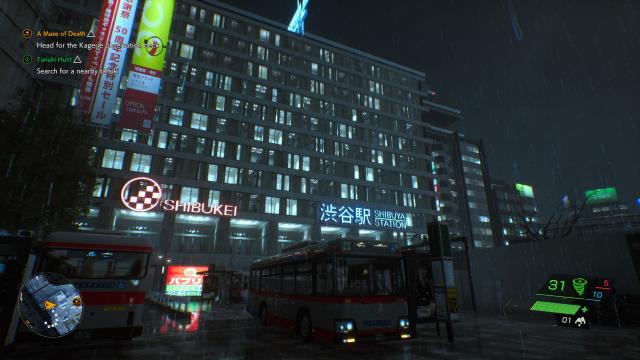
Which brings me to my main issue with Ghostwire Tokyo: while I think it's fun to play, I'm really disappointed, if not angry, with how little effort it makes on the horror side of the equation. Ghostwire Tokyo contains a fully open world - you can stroll through Shibuya, visit the station, fly between buildings, walk the famous crossroads, and so on. But... to what end? Every attempt to embark the player on a spooky atmospheric journey is ruined by hours of bland open world progression, where you need to purify torii gates on every block and complete uneventful side quests in order to upgrade your powers.
Ghostwire Tokyo wants to be a first person shooter, a horror game, a (bad) platformer, but also an RPG... so you need to level up by saving spirits scattered across all of Shibuya, which is more hours of searching the roofs and rummaging between buildings. If only the city contained some surprises and scares, but no, they're just normal Shibuya streets, apart from the fact that there's nobody around and ghost cats are the vendors in convenience stores. KK's constant joking around certainly doesn't help either and made me wonder if I wasn't watching a comedy show rather than playing a horror game.
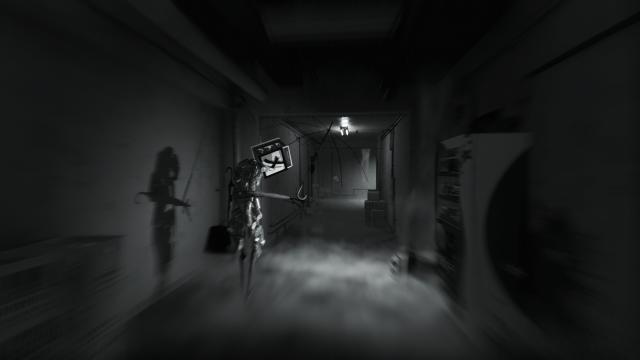
That said, the story does include a couple of really disturbing scenes. Some places, side quests, and story sequences also feature chilling little details (although you probably won't understand them unless you can read Japanese kanji) or weird phenomena that can startle and instil a little fear. But they're a few minutes here and there in the middle of 17 hours of action combat and open world exploration.
I must, however, stress that Ghostwire Tokyo does a wonderful job in terms of graphics and art design; Shibuya's landscape is gorgeous, and both the horror-inspired and shinto-inspired elements are really convincing (but far too scarce). The photo mode is also useful for keeping souvenirs of your discoveries. Great care in design terms is found in the smallest details. For instance, if you look closely, you'll see that the spells aren't just light but consist of countless tiny kanjis gravitating around your hand; you can read kaze for the wind spell or mizu when you use the water spell.
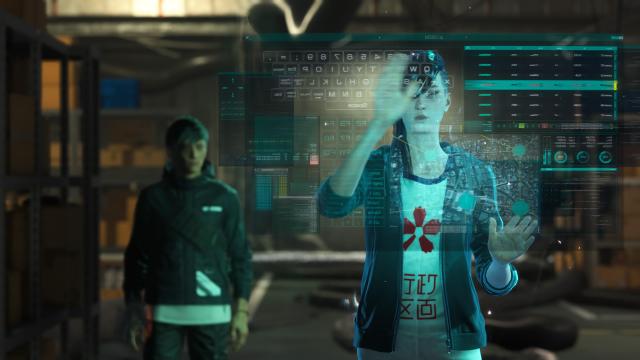
The story is another element that would have been great if only it were more detailed. There are interesting bits about KK's past, his former comrades and family, but it's difficult to understand what precisely happened to them. Akito's background and timing is even worse in this respect - you learn about his relationship with his sister just before the final battle; it's a beautiful and powerful scene, full of heartbreaking symbolism, but it comes much too late in my view. There's also a strange professor called Ed, who contacts you via telephone boxes and speaks a funny way, but nothing is revealed about his backstory or why he's helping you. I spent most of the game without any clear view of the story or the characters and this frankly hurt the experience.
Ghostwire Tokyo is a cool action game with equally cool design in many respects, but suffers from several shortcomings and erroneous game design choices. There's not enough emphasis on horror, story, or spectacle, and while it tends to attempt a lot of things at the same time - action shooter, horror, RPG, open world, platformer - it fails to excel at most, if any, of them.
After graduating from a French business school, Thomas felt an irresistible force drawing him to study Japanese, which eventually led him to Japanese Profeciency Test level 1 in 2012. During the day, Thomas is a normal account manager. But at night he becomes Ryuzaki57, an extreme otaku gamer hungry for Japanese games (preferably with pretty girls in the main role). His knowledge now allows him to import games at Japanese release for unthinkable prices, and then tell everyone about them. You may also find him on French video games media. Feel free to contact him on Twitter at @Ryuz4ki57









